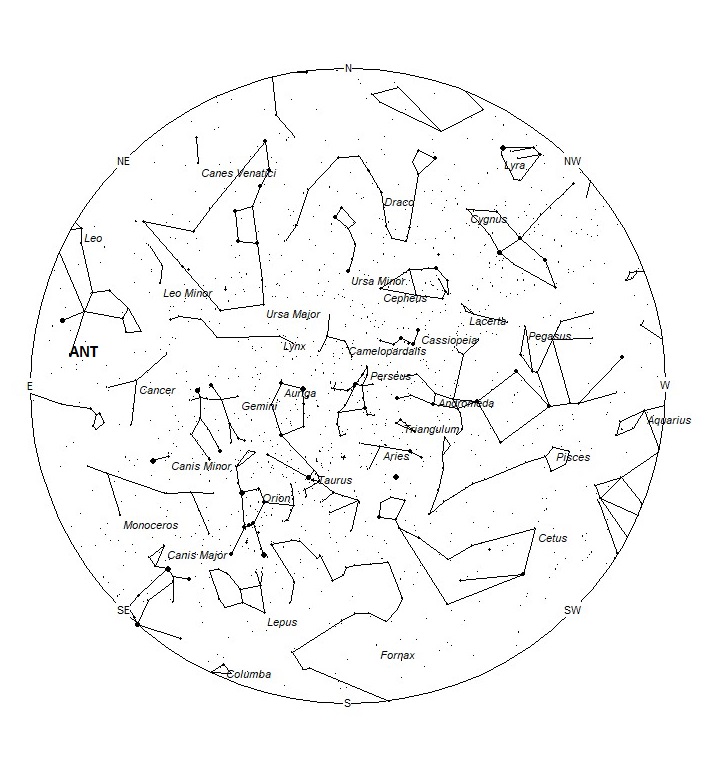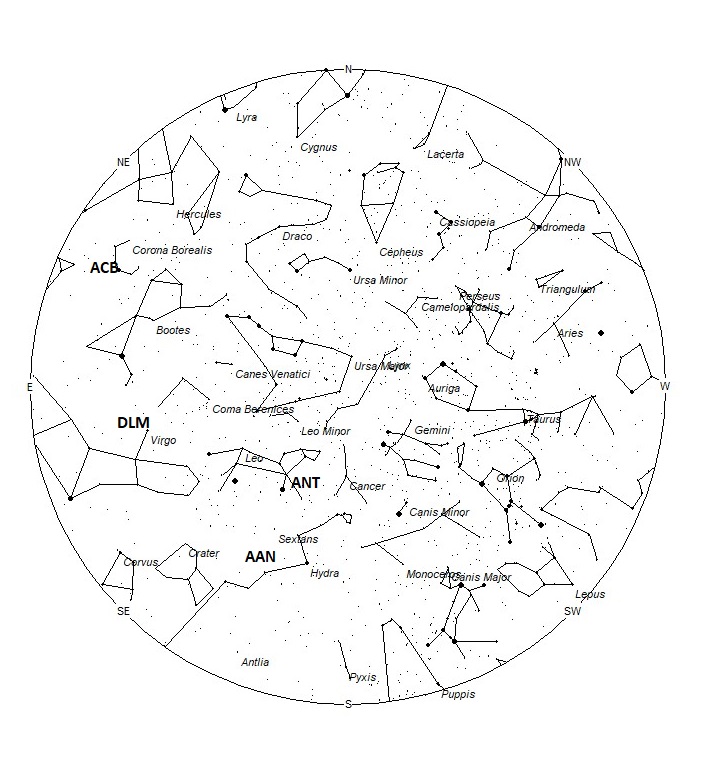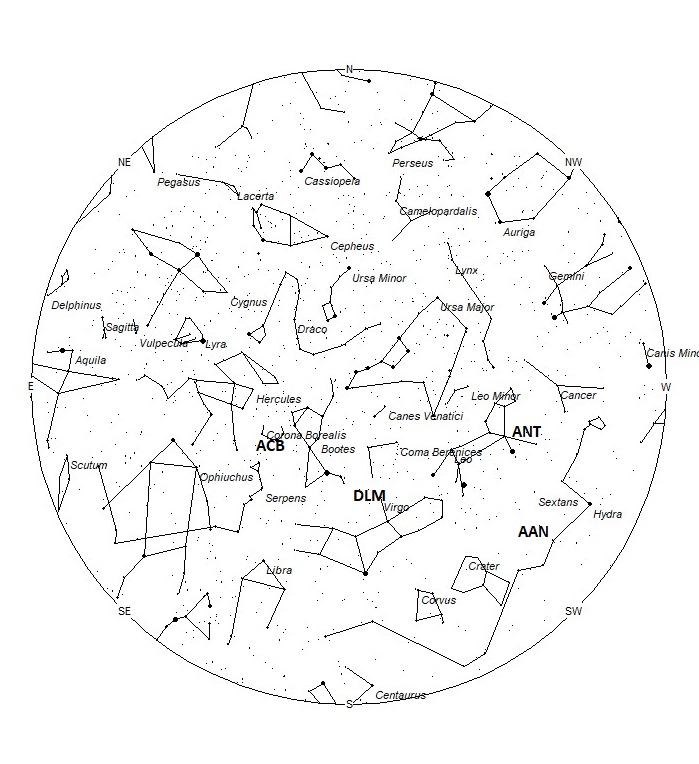February offers the meteor observer in the northern hemisphere a couple of weak showers plus falling sporadic rates. This may not seem too exiting but you never know when surprises are in store. An errant earthgrazer from the Centaurid complex may shoot northward. Better yet, a bright fireball may light up the sky. February is the start of the evening fireball season, when an abundance of fireballs seem to occur. This lasts well into April as seen from the northern hemisphere. Sporadic rates are near maximum for those viewing from the Southern hemisphere. There are no strong showers this month, but sporadic rates are in excess of 10 per hour as seen from mid-southern latitudes.
During this period, the moon reaches its last quarter phase on Thursday February 4th. At this time, the half-illuminated moon is located 90 degrees west of the sun, thus it will rise near 01:00 local standard time. This weekend the nearly full moon will rise just after the end of dusk and will lie above the horizon all night long. As lunar interference is present all night long, this is the worst time to try and view meteor activity as the lunar glare will obscure all but the brighter meteors. The estimated total hourly meteor rates for evening observers this week is near 2 as seen from mid-northern latitudes and 3 as seen from tropical southern locations (25S). For morning observers, the estimated total hourly rates should be near 12 as seen from mid-northern latitudes (45N) and 12 as seen from tropical southern locations (25S). The actual rates will also depend on factors such as personal light and motion perception, local weather conditions, alertness, and experience in watching meteor activity. Rates are reduced during this period due to moonlight. Note that the hourly rates listed below are estimates as viewed from dark sky sites away from urban light sources. Observers viewing from urban areas will see less activity as only the brighter meteors will be visible from such locations.
The radiant (the area of the sky where meteors appear to shoot from) positions and rates listed below are exact for Saturday night/Sunday morning January 30/31. These positions do not change greatly day to day so the listed coordinates may be used during this entire period. Most star atlases (available at science stores and planetariums) will provide maps with grid lines of the celestial coordinates so that you may find out exactly where these positions are located in the sky. A planisphere or computer planetarium program is also useful in showing the sky at any time of night on any date of the year. Activity from each radiant is best seen when it is positioned highest in the sky, either due north or south along the meridian, depending on your latitude. It must be remembered that meteor activity is rarely seen at the radiant position. Rather they shoot outwards from the radiant, so it is best to center your field of view so that the radiant lies at the edge and not the center. Viewing there will allow you to easily trace the path of each meteor back to the radiant (if it is a shower member) or in another direction if it is sporadic. Meteor activity is not seen from radiants that are located far below the horizon. The positions below are listed in a west to east manner in order of right ascension (celestial longitude). The positions listed first are located further west therefore are accessible earlier in the night while those listed further down the list rise later in the night.
These sources of meteoric activity are expected to be active this week.
Details of each source will continue next week when viewing conditions will more favorable.
| SHOWER | DATE OF MAXIMUM ACTIVITY | CELESTIAL POSITION | ENTRY VELOCITY | CULMINATION | HOURLY RATE | CLASS |
| RA (RA in Deg.) DEC | Km/Sec | Local Standard Time | North-South | |||
| Anthelion (ANT) | – | 09:36 (144) +14 | 30 | 01:00 | 2 – 1 | II |
| alpha Antliids (AAN) | Feb 02 | 10:26 (157) -07 | 44 | 02:00 | <1 – <1 | IV |
| December Leonis Minorids (DLM) | Dec 20 | 13:15 (199) +12 | 63 | 05:00 | <1 – <1 | II |
| alpha Coronae Borealids (ACB) | Jan 27 | 15:38 (235) +25 | 58 | 08:00 | <1 – <1 | IV |




